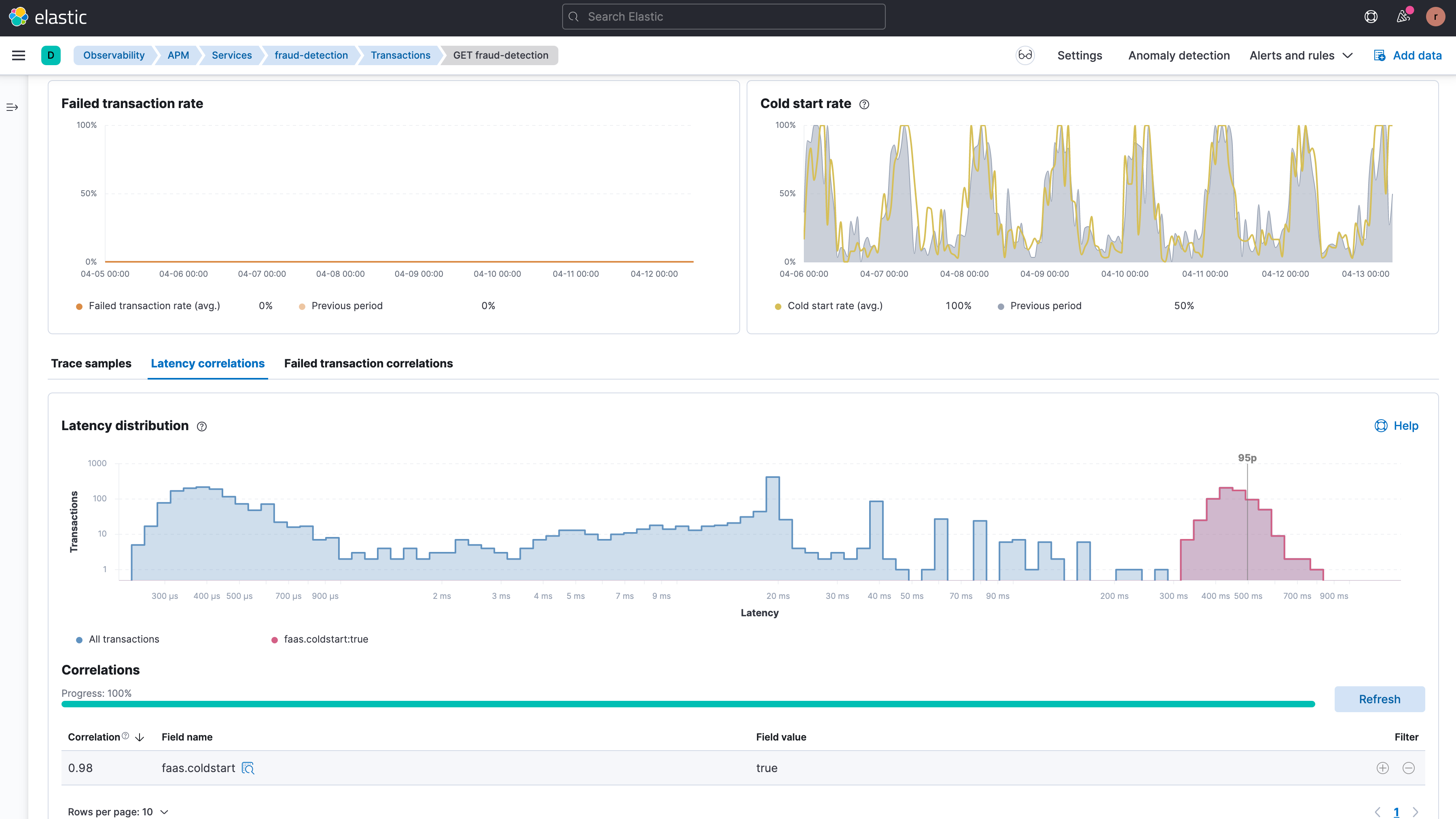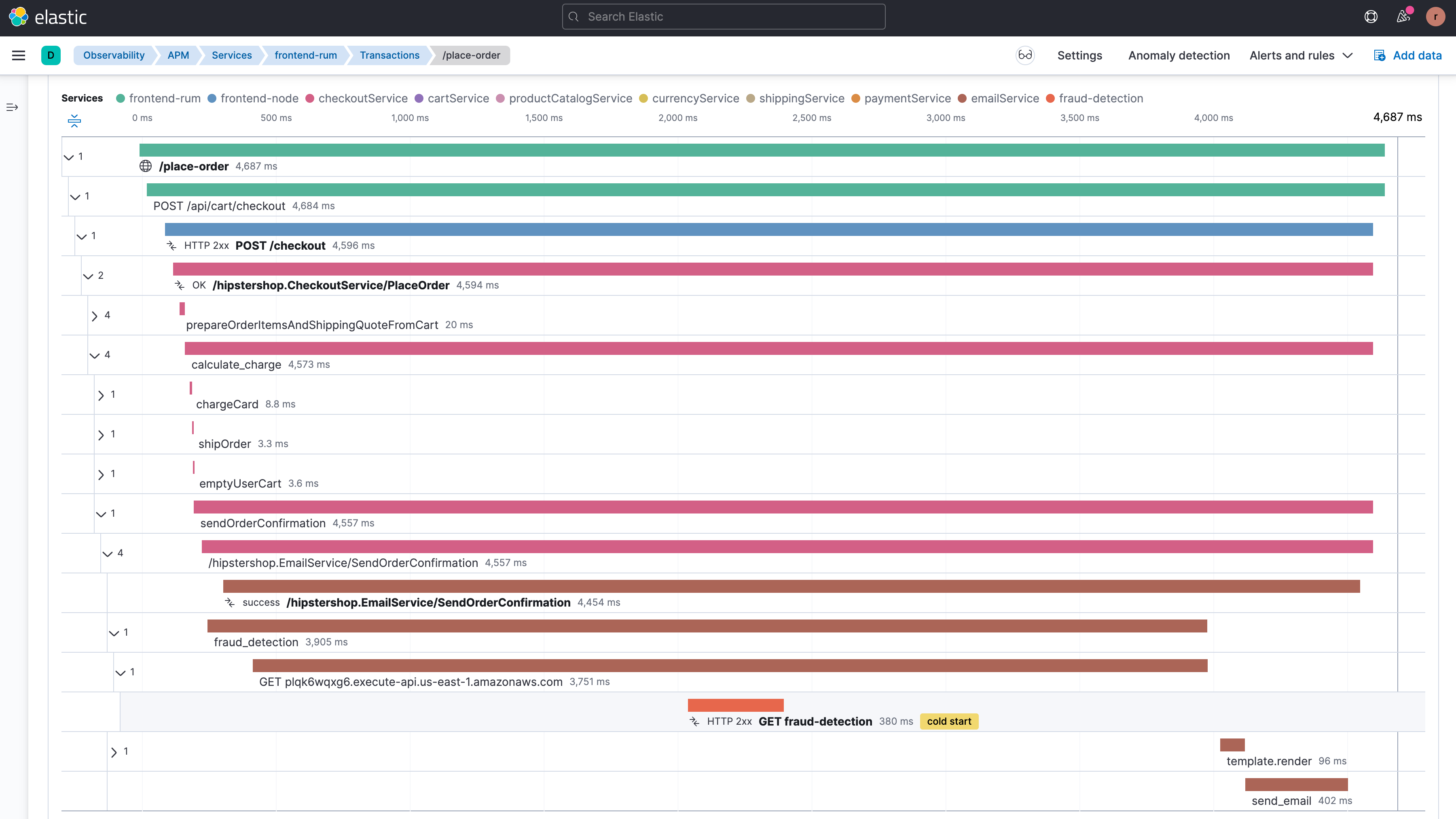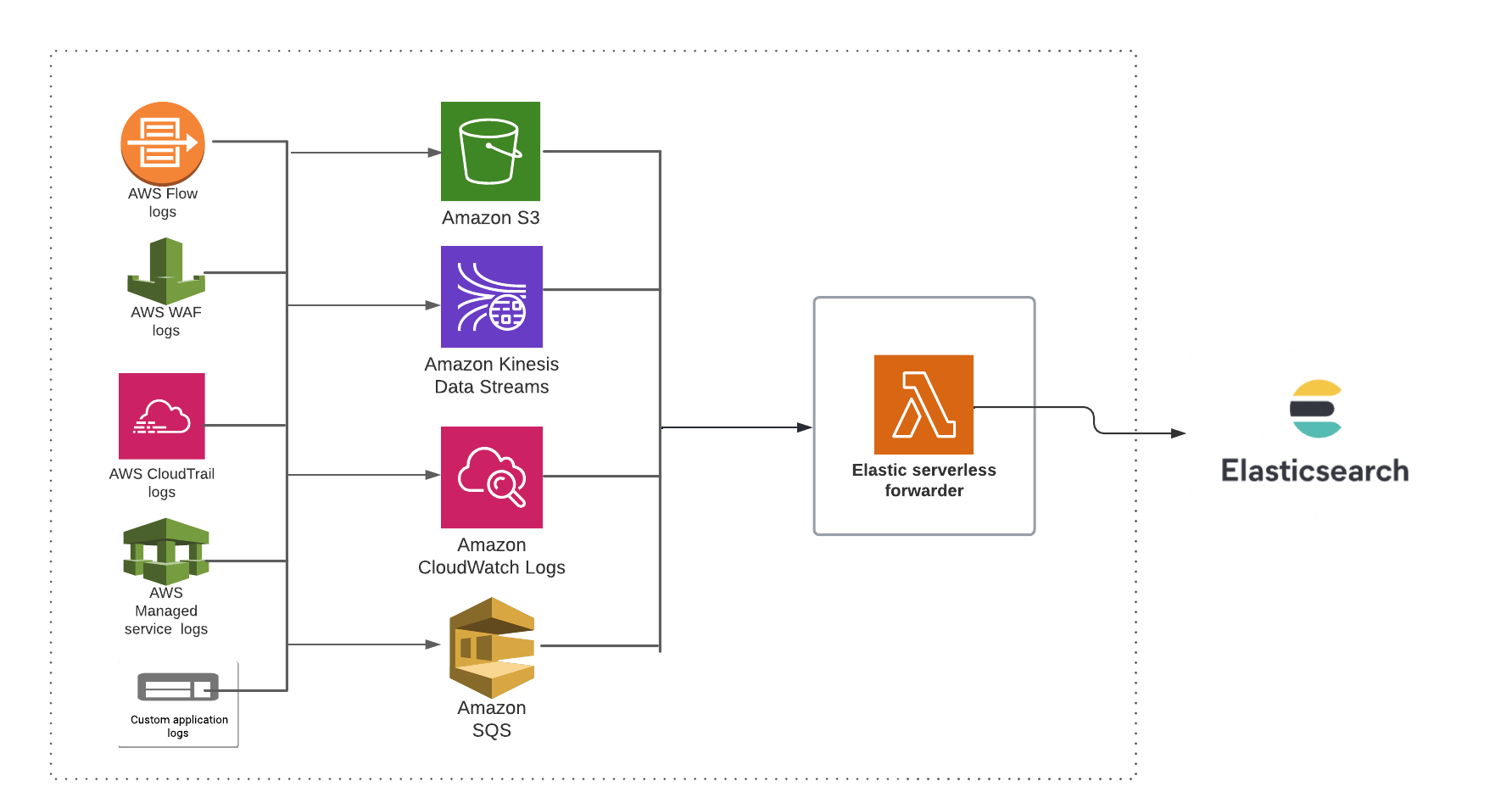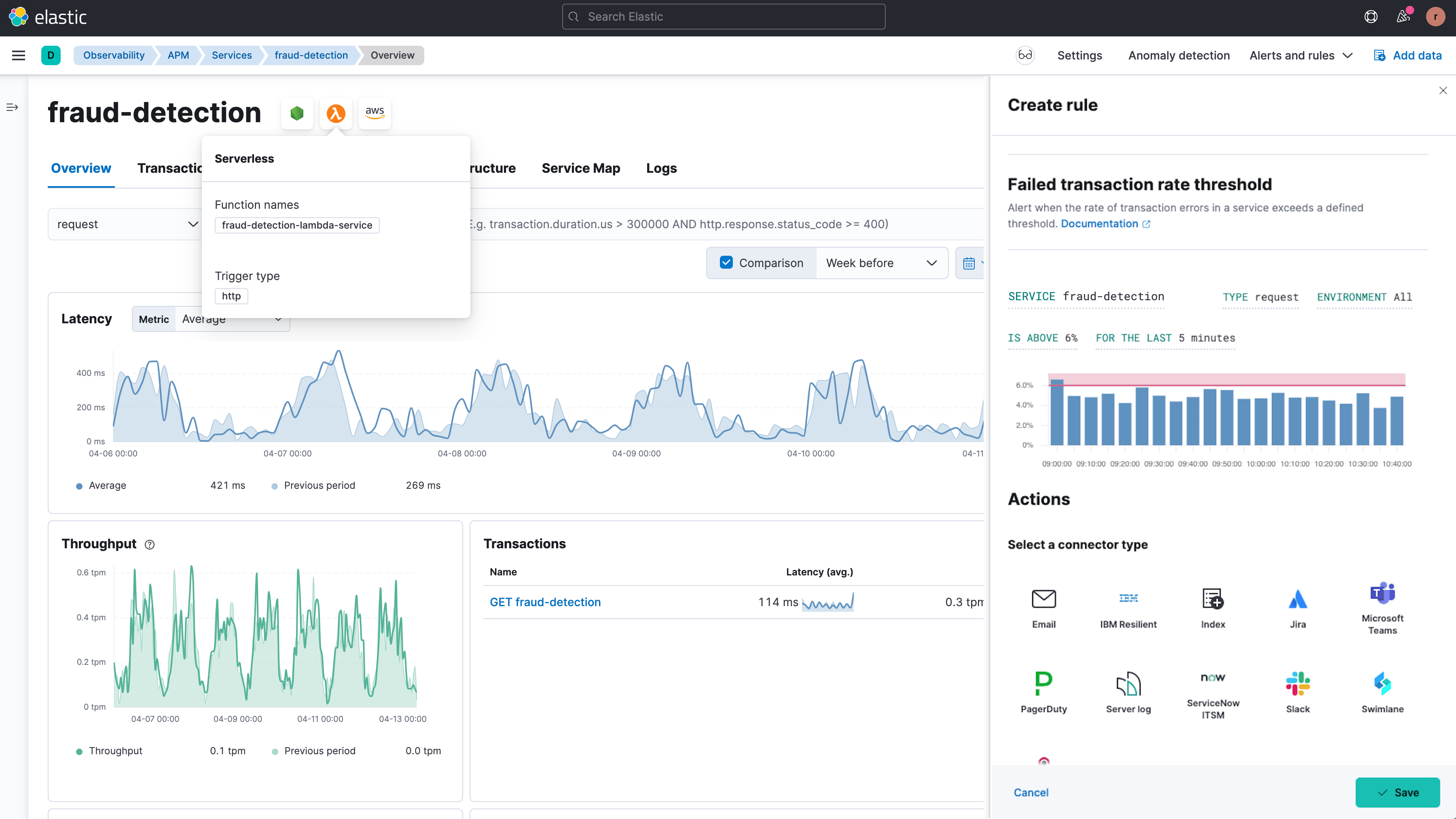What is serverless monitoring?
Serverless monitoring definition
Serverless monitoring is a service that allows businesses to monitor, develop, and optimize their serverless applications. The event-driven architecture (EDA) of serverless monitoring requires monitoring designed specifically for this environment. Serverless monitoring uses known metrics to point teams to issues.
Serverless monitoring is an important component of overall observability. Serverless observability provides better visibility into system outputs so that concerned teams can address and remedy potential issues more efficiently.
Businesses can use serverless monitoring to evaluate the health of their systems, configure alerts to address issues as they come up and, in turn, optimize performance. Serverless monitoring is also an important cost-management tool that plays into performance optimization.
What is serverless?
Serverless computing is a cloud computing model that allows developers to build and run applications without the need to manage servers or back-end infrastructure. The cloud provider runs and manages server infrastructure for developers, and provides servers on demand and at scale. The computing model’s consumption-based pricing is very advantageous to businesses from a cost perspective. The pay-as-you-go structure of serverless enables businesses to deploy applications and scale at a lower infrastructure cost.
All leading cloud providers offer serverless computing as Function as a Service (FaaS).
- AWS Lambda is AWS' serverless function. It allows developers to run code without thinking about servers or clusters.
- Google Cloud Functions enables you to develop and deploy scalable applications and functions while they manage your cloud-based servers.
- Azure Serverless FaaS enables you to build, deploy and operate applications without needing to manage infrastructure.
There is also a serverless framework that companies use on their own infrastructure with OpenLambda, OpenFaas, and others.
But, there are challenges in observing systems and application operations in serverless services. Serverless monitoring fills in visibility gaps by enabling you to monitor the functions you run, the containers they are in, the applications, and the serverless environment as a whole.
How does serverless monitoring work?
Serverless monitoring solutions ingest data from your entire serverless infrastructure, aggregate resource usage statistics, and provide logs and metrics. Serverless monitoring also allows you to see your serverless function activity, monitor resource usage and set up automated alerts for actionable insight.
With serverless monitoring dashboards, you can eliminate blindspots by monitoring function health and memory usage, and identify where application bottlenecks are occurring.
Why is serverless monitoring important?
Serverless monitoring allows developers to address performance issues that are critical to system health and user experience in serverless computing.
With serverless, the cloud provider has taken on the load of managing servers so that your developers can instead focus on running code. Though this presents many advantages, it means businesses have less control and visibility over their environments. Consequently, identifying bugs or issues can be difficult.
Serverless monitoring provides a solution to these challenges by allowing teams to effectively identify and manage issues that arise frequently in complex digital ecosystems.
Serverless monitoring is also a crucial tool that allows ITDM and BDM to monitor serverless spending. The ability to understand how many resources are being used at a given time enables businesses to scale up or down as needed and control spending.
What are the benefits of serverless monitoring?
Serverless monitoring improves efficiency and gives you visibility into your serverless environment. You can proactively mitigate and address performance issues and streamline various operations.

- Improve latency
Slow function execution—or latency—negatively impacts the user experience. Large datasets impact your ability to pinpoint latency issues. The outlier data that clues you into delays is often difficult to see behind the average metrics surfaced in large dataset pulls. A monitoring tool provides you with customizable dashboards to answer these challenges. - Prevent cold starts
Serverless computing's event-based architecture means it uses containers for functions only when an event calls for it. A serverless computing application can keep the recently used function 'warm' for a while, but if it isn't called on for a period of time, it will go 'cold'. A cold start occurs when a function that has sat cold for a while is suddenly called on again. This can cause latency issues and requires additional computing power. A serverless monitoring tool can help identify which functions are used and when, so you can optimize performance. - Identify invocation errors
An invocation error is a response to any broken links in the chain. It occurs when the invocation request is rejected before your function receives it.
With a monitoring solution, get visibility of your serverless environment to identify and address invocation errors.
- Monitor usage
Memory usage is a configurable component of serverless computing services. Depending on the provider, you can set how much memory space is dedicated to a function. This decision affects how much processing power is needed to run the function when it is called. - Predict costs
Serverless providers only charge you for the functions and computing resources that are used. Generally, this is a cost-saving alternative to other architectures because you only pay for what you use. But when you scale operations, cost increases can become less predictable. For example, a misconfigured function could eat into more computing resources than necessary. With a total cost of ownership (TCO) serverless model, you can better predict costs because infrastructure, development, and maintenance costs are already factored in. - Better scalability
With serverless monitoring solutions, you can monitor functions and usage, and better predict costs so you can scale better. By monitoring usage and predicting costs, businesses can scale more effectively, while remaining within budget.
What are serverless monitoring best practices?
Granular information: A good serverless monitoring tool should provide you with specific data, including request logs and distributed traces. Look for a monitoring solution that gives you the full picture and allows you to zoom in on problem spots.

Data availability: Monitoring data should be immediately available. You want to look for a monitoring tool that suits your scale and can scale as you do.
Log collection: Log collection should not cause latency or interfere with application performance. Look for a monitoring tool that is compatible with your systems, that won't require any add-ons and plugins.
Explore serverless monitoring with Elastic

Alerting: Look for a serverless monitoring tool that allows you to configure alerts that match your existing detection and alert mechanisms. A unified strategy across systems helps save time and associated costs.

What are the challenges of serverless monitoring?
The first challenge of serverless monitoring is transparency. In a serverless computing model, servers are managed by your cloud provider, such as AWS. Though serverless means you can focus on developing and launching code without fussing about server availability, you have less server visibility. This calls for a monitoring service dedicated to your serverless environment, so you can get overall observability.
Other challenges of serverless monitoring include:
- Stateless nature: A serverless model only uses containers for functions when they are called. Servers are only accessible when the system calls a function.
- Transient functions: Serverless architecture is challenging to monitor because it is built on events that trigger functions. Depending on the cloud provider’s runtime limitations, monitoring becomes more complicated.
- Distributed architecture: Serverless applications are distributed by nature, and their components can be spread across multiple services including both server and serverless architectures. This makes it challenging to get a complete picture of the application's health and performance.
- Rapid scaling: Serverless applications can rapidly scale up and down based on demand, which makes it difficult to anticipate and manage the resources needed to monitor these serverless applications.
- Cost optimization: Monitoring serverless applications can be expensive, especially when using third-party monitoring tools that charge based on usage.
To combat these challenges, businesses should have a comprehensive observability solution that can handle both server and serverless monitoring. A comprehensive observability solution helps close the gaps between monitoring types so you can experience all the benefits of serverless architectures.
Serverless monitoring tools
Serverless monitoring tools are essential for operating in a serverless environment. At their best, they should deliver a seamless experience that improves your overall operational efficiency. But not all tools are created equal.
Serverless function providers like AWS offer native monitoring tools. AWS Cloud Watch and AWS X-Ray are serverless monitoring solutions that fulfill separate functions. Coupled, they can give you better serverless visibility — if you are only using AWS. If your operations rely on multiple cloud providers, you’ll need a serverless monitoring tool that integrates with those providers.
When choosing the right serverless monitoring tool for your business, here are some things to consider:
- Unified visibility: The ability to get a full stack view with a single tool improves your troubleshooting workflow. Consider having a single pane of glass for these capabilities rather than multiple UIs and tools that complicate the troubleshooting workflow.
- Real-time tracking: Real-time alerts and metrics data allows for complete visibility. Notify your teams of any potential red flags immediately.
- Language support: Make sure your serverless monitoring tool supports all your programming languages.
- Ease of setup: Serverless monitoring should make your system simpler, not more complex. Seek solutions that are easy to use and implement.
- Integrations: Your serverless monitoring tool should also be compatible with other cloud integrations, like AWS, Azure, and Google Cloud. Choose a tool that seamlessly supports your operating environments as a whole.
Serverless ingest
Serverless ingest is an agentless way to pull large datasets from multiple sources within AWS environments. With Elastic Serverless Forwarder, a built-in tool for ingesting data powered by Elasticsearch, you can frictionlessly pull, transform, enrich, and ship data to your serverless monitoring tool or observability tool.

Serverless monitoring with Elastic
Elastic Observability, built on Elasticsearch, delivers a full stack experience, giving you the ability to monitor and observe environments beyond serverless architectures, both on-premises and in cloud. Identify AWS Lambda latency issues, cold starts, and other invocation issues. Logs are collected with the rest of your telemetry data, so you can look at all your data in context, in one place.